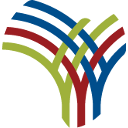Nairobi — The African Union and its partners have endorsed the creation of a continent-wide regulatory network to strengthen oversight of veterinary medicines, following a three-day consultative meeting in Nairobi.
The initiative, led by the AU Inter-African Bureau for Animal Resources (AU-IBAR) and the AU Pan African Veterinary Vaccine Centre (AU-PANVAC) with support from GALVmed, WOAH and the UK Veterinary Medicines Directorate (UK VMD), aims to improve access to safe, effective and affordable veterinary products for livestock keepers across Africa.
The meeting brought together Heads of National Regulatory Authorities, Chief Veterinary Officers, Regional Economic Communities and development partners to review a GALVmed-commissioned study on establishing a Network of Regulatory Authorities. Delegates endorsed the formation of the Pan-African Regulatory Authorities Network for Veterinary Products (PARAN-VPs), which will drive harmonised regulation of veterinary products across AU member states.
Over the next 24 months, partners will finalise the network’s terms of reference, governance structure and implementation roadmap.
Follow us on WhatsApp | LinkedIn for the latest headlines
Africa’s livestock sector supports more than 350 million people and, in Kenya, contributes 12 percent of the country’s GDP and 42 percent of agricultural output. But many countries continue to grapple with substandard and falsified veterinary products, varying regulatory capacity, dependence on imported medicines and rising antimicrobial resistance–factors that limit productivity and hinder efforts to eradicate transboundary diseases such as PPR.
Earlier this year, veterinary experts agreed on registration requirements for PPR vaccines under the continental eradication programme, signalling the potential benefits of harmonised approaches.
The proposed PARAN-VPs will provide a platform for aligning standards, sharing information and coordinating regulation of veterinary medicines. It will also develop harmonised guidelines, support national authorities in strengthening systems, and coordinate quality control, surveillance and approval processes that are better managed collectively at continental level.
Stakeholders have been invited to contribute to shaping the network’s implementation roadmap.
Speaking during the meeting, GALVmed CEO Dr. Lois Muraguri urged collective action to address the needs of smallholder farmers. “Millions of farmers depend on livestock for daily income. When the quality of veterinary products is inconsistent, they bear the cost. Harmonised regulation will help ensure that safe and effective products reach the people who need them most and will make the market more predictable for manufacturers and regulators alike.” She said.
She added that clearer, predictable and harmonised regulatory systems would lower the cost of veterinary products and attract more investment in local manufacturing.
AU-IBAR Director Dr. Huyum Salih said many countries still rely on human-medicine regulatory frameworks due to capacity constraints, resulting in delays and uneven standards. She noted the economic impact of the gaps. “Africa loses an estimated USD 4 billion every year due to unrealised livestock potential. A coordinated regulatory framework will help close this gap by protecting farmers from poor-quality products and strengthening countries’ ability to manage disease threats,” Dr Salih said.
Participants also cited the role of misinformation in undermining public health initiatives. Kenya’s recent vaccination drive faced resistance due to mistrust and circulating false claims, underscoring the need for improved communication, stronger oversight and certified vaccine production facilities.
Regulatory authorities further highlighted the burden of fragmented requirements across member states, noting the strain it places on monitoring, inspection and certification of products entering national markets.


